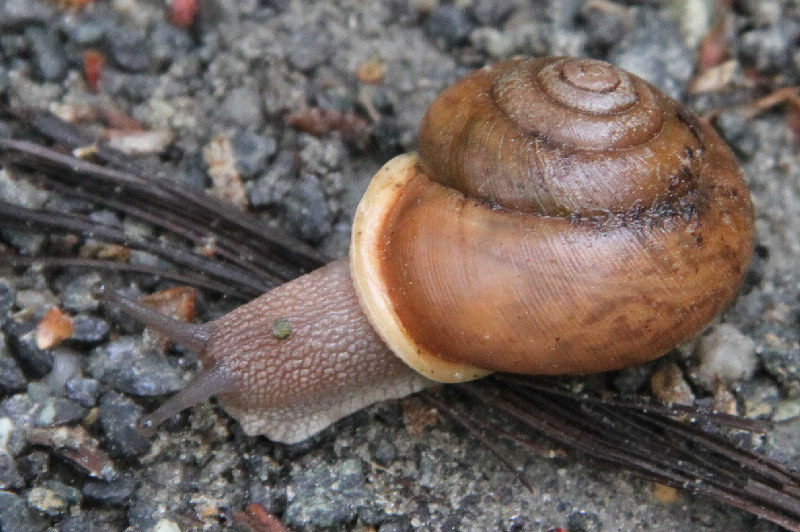Adaptations
Pulmonates such as the Neohelix albolabris have lost their (ctenidia) gill altogether, and the vascularized mantle wall has evolved to function as a lung. The pneumostome, which is located on the external anatomy of the snail, is part of the respiratory system of the snail and is used as a breathing pore. Air enters through the pneumostome into the snails single lung, the air-filled mantle cavity. The respiratory protein in Neohelix albolabris is hemocyanin, which is used to carry oxygen in the hemolymph (circulatory fluid of the snails) (Hickman, 2011).
What can be seen above is the pneumostome located on the right side of the snail.
Photo taken by Aydin Orstan
Neohelix albolabris are capable of reaction to stimuli by using their abilities of smell, taste, touch, and sense of light. Special photosensory and chemosensory cells located in the head and tentacles allow snails to function at their respective state (Hickman, 2011).

The Neohelix albolabris can be seen moving using it's foot.
Photo taken by Stan Malcolm
Locomotion for the Neohelix albolabris is completed by the foot. It is located ventral to the body and its structure is comparable to the sole which allows for the snail to creep along through waves of muscular contraction. Mucus is secreted and benefits in adhesion. Also located on the foot are tiny epithelial cilia which along with the mucus allow the snail to move over varying textures located within their environment (Pavlova, 2001) .
Back to Home
